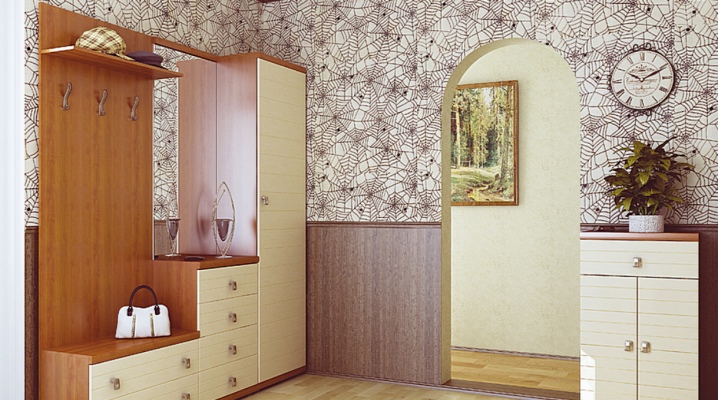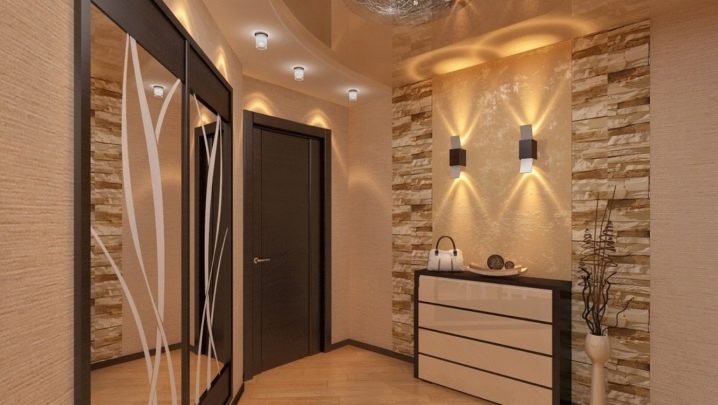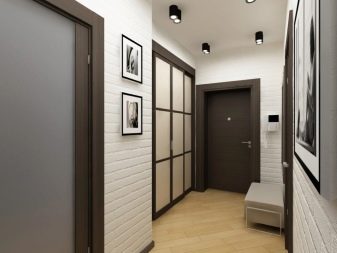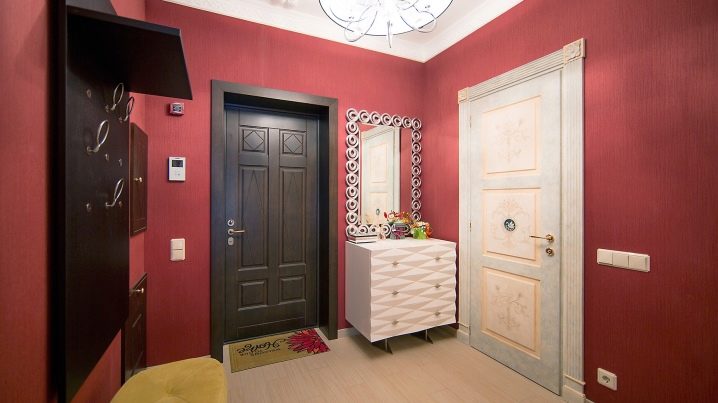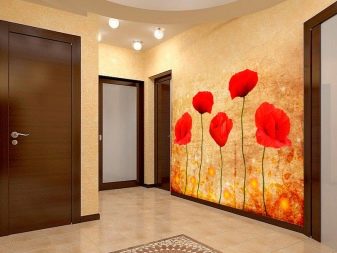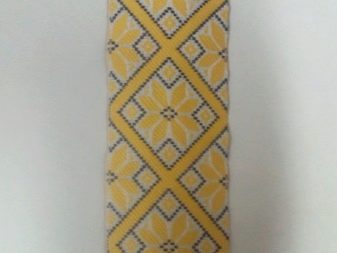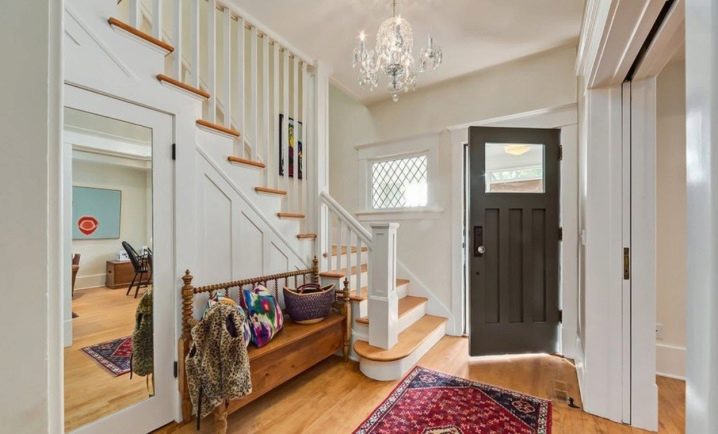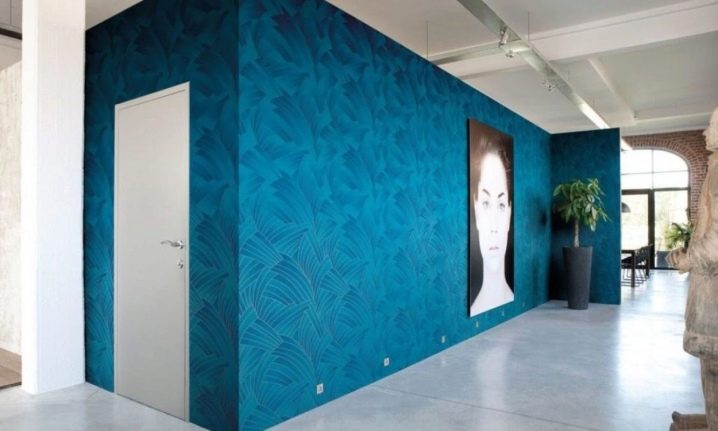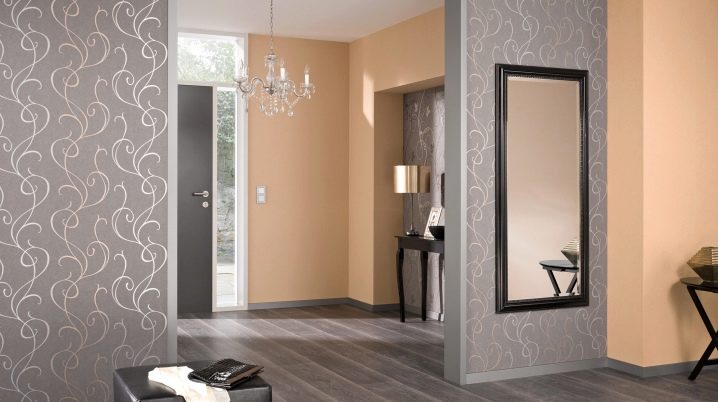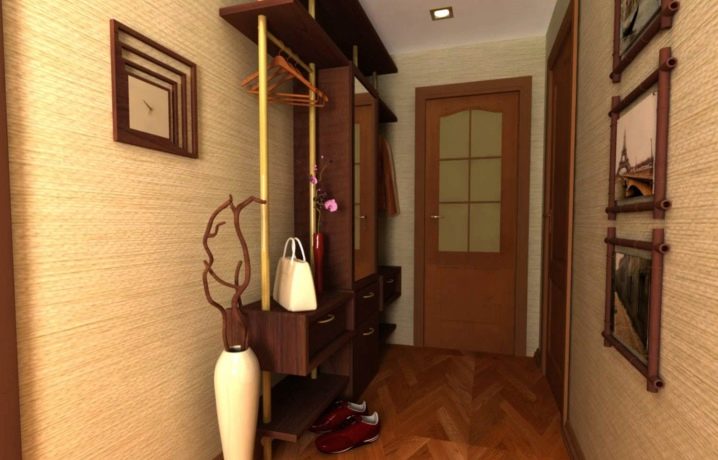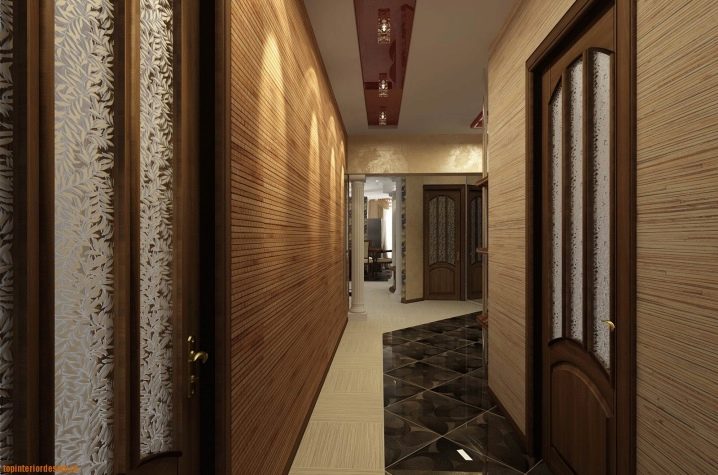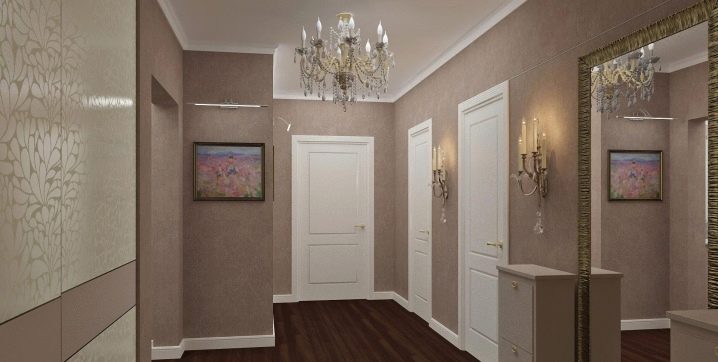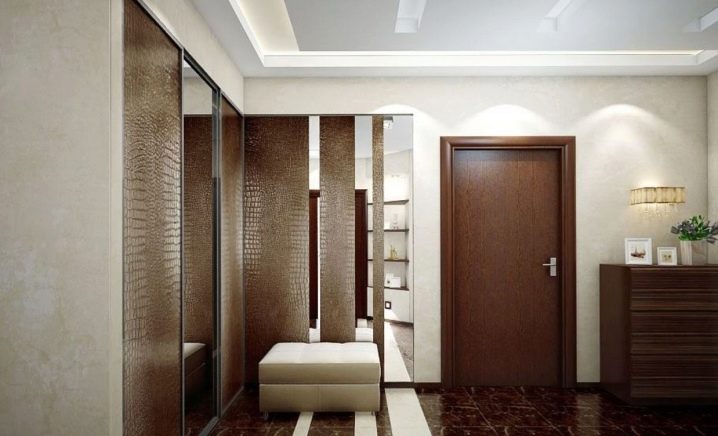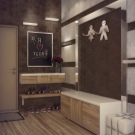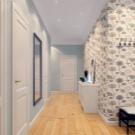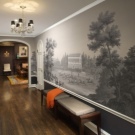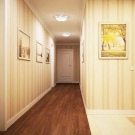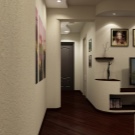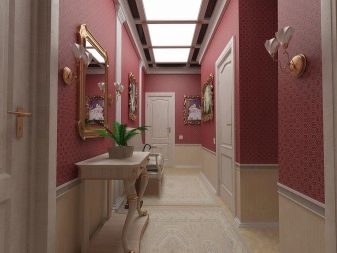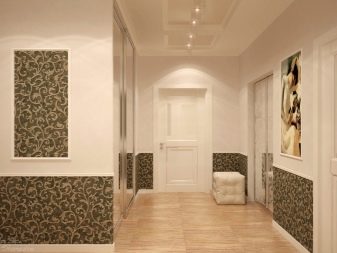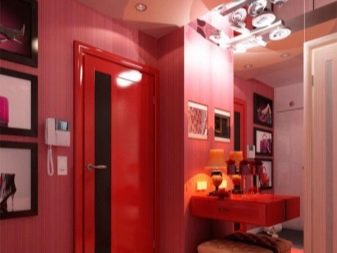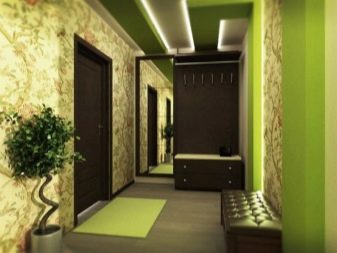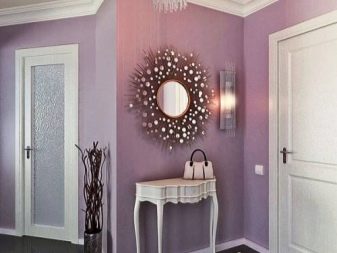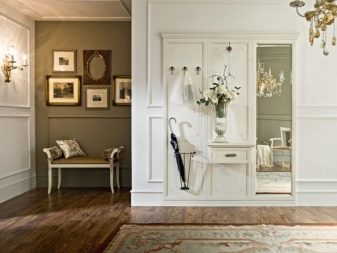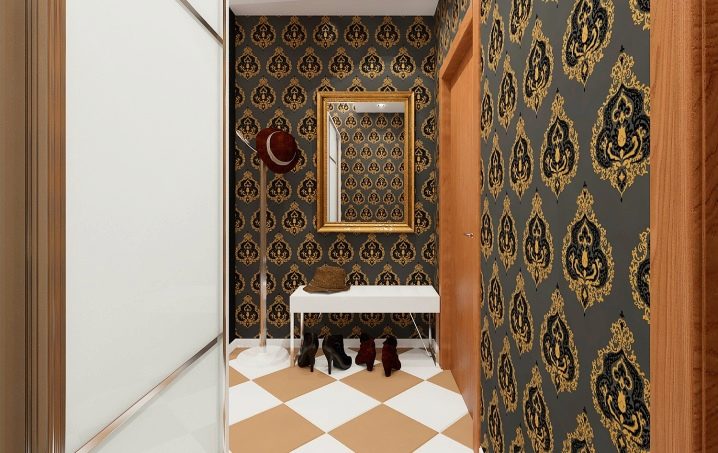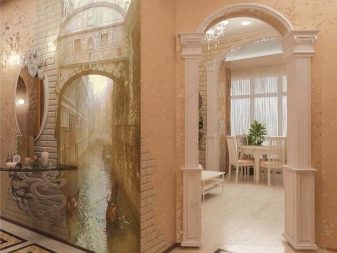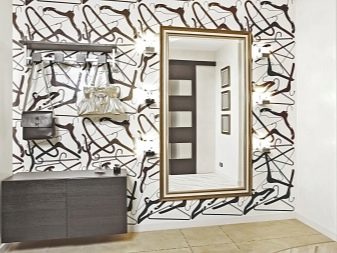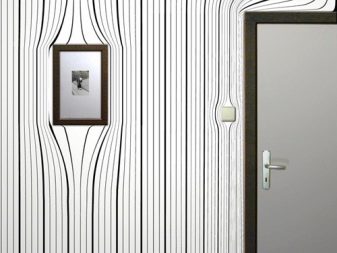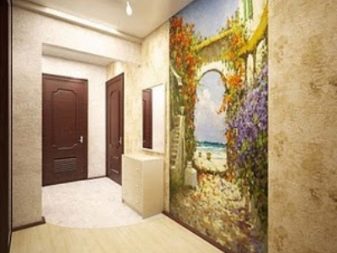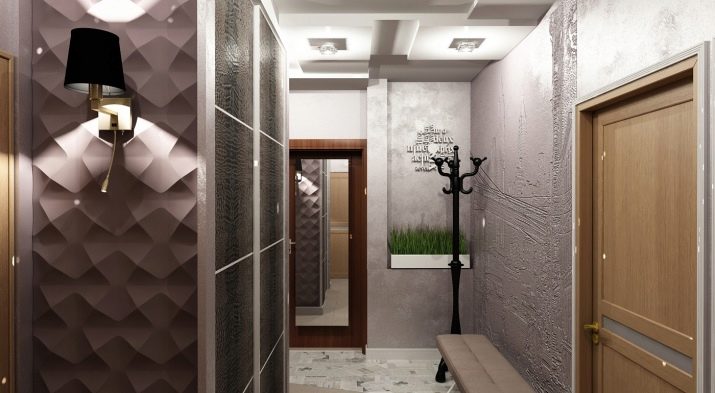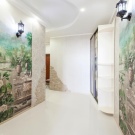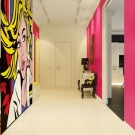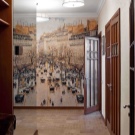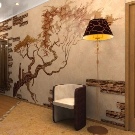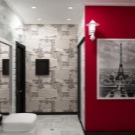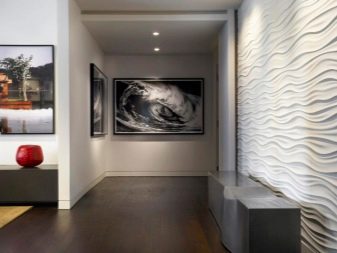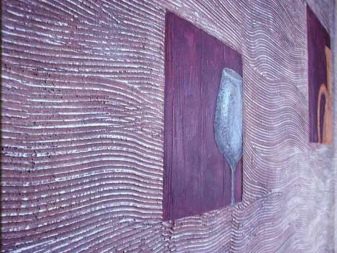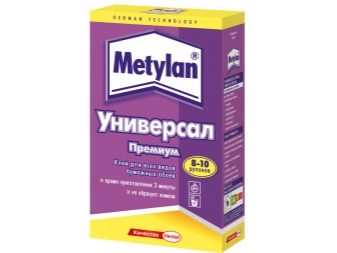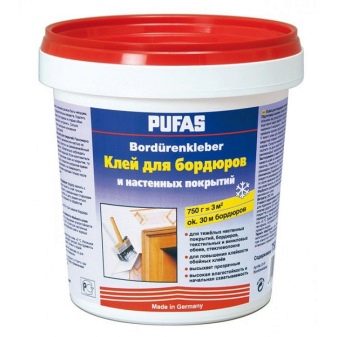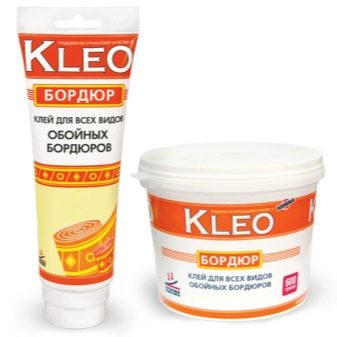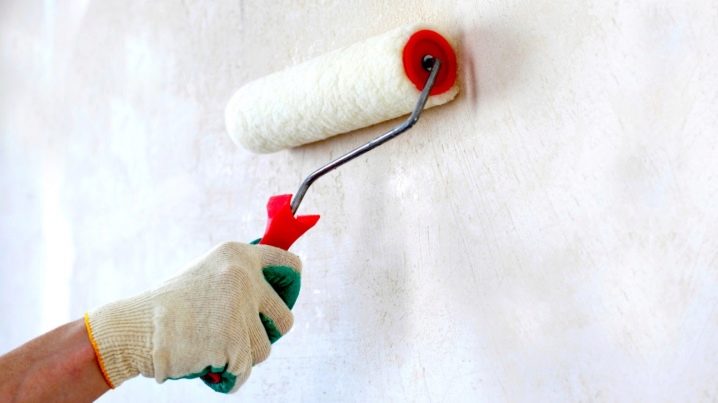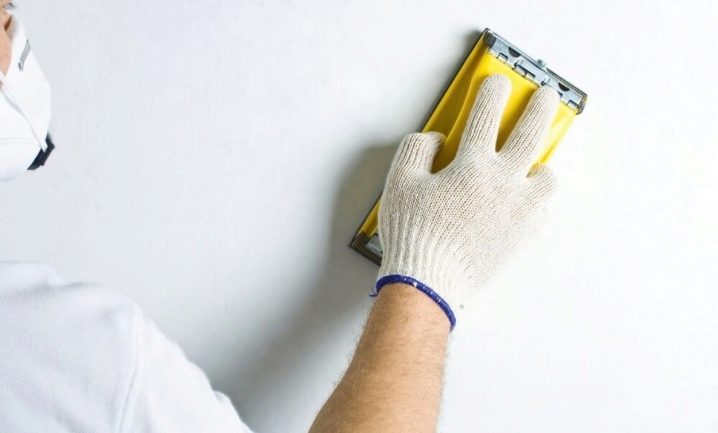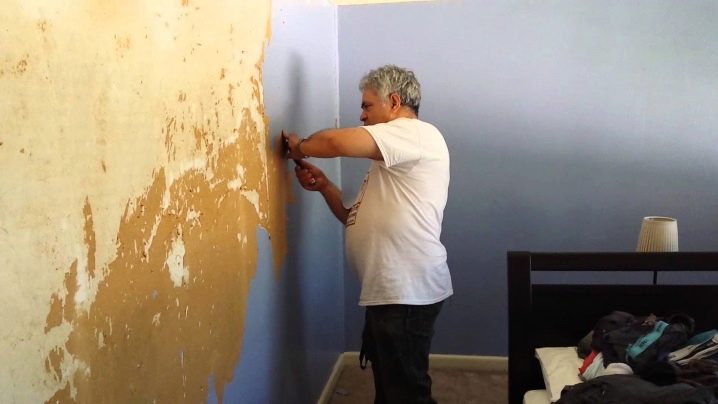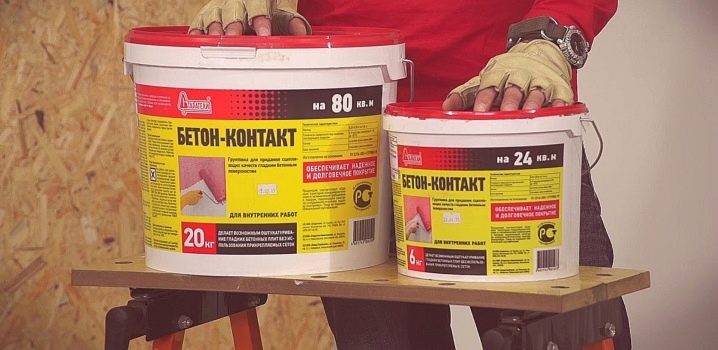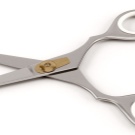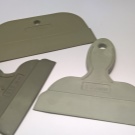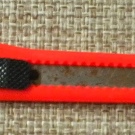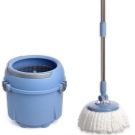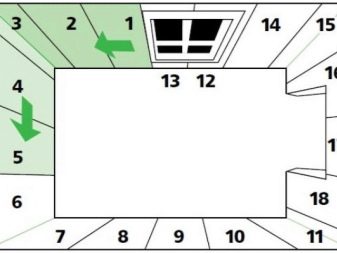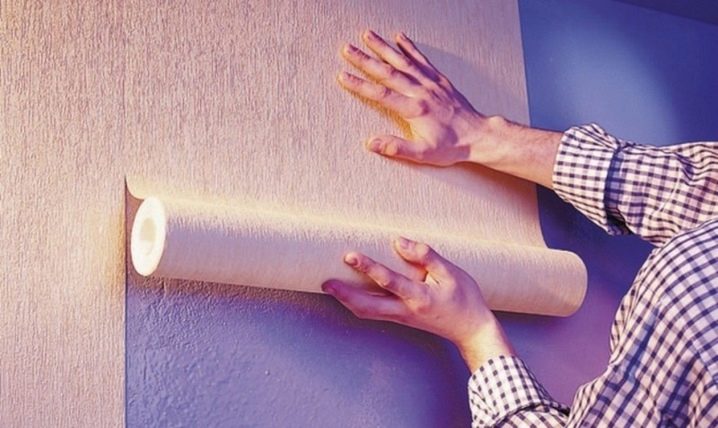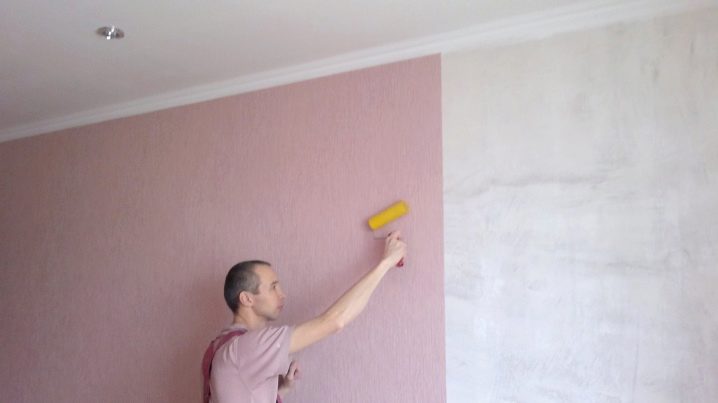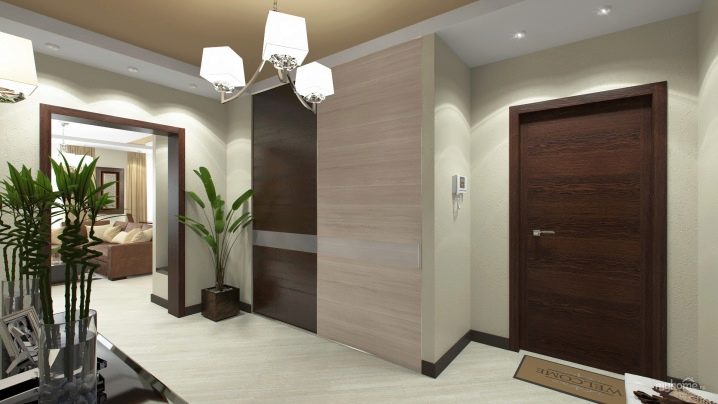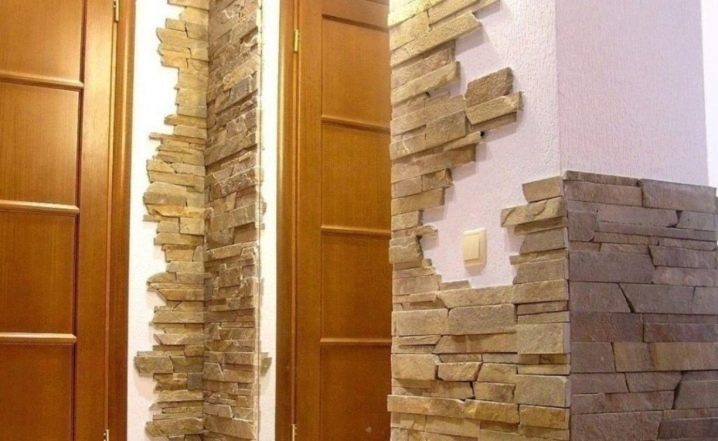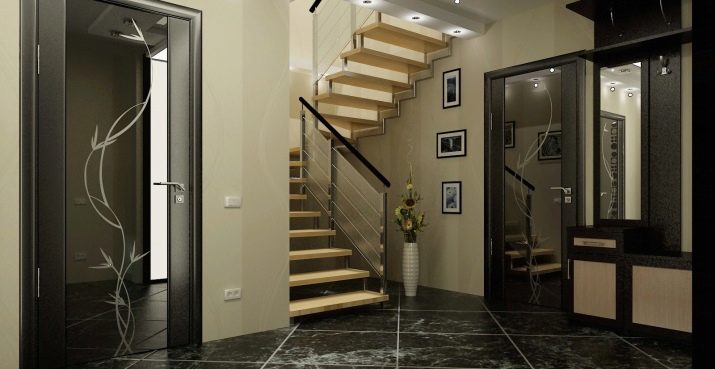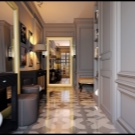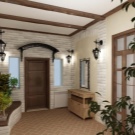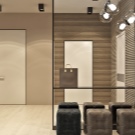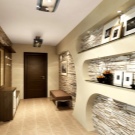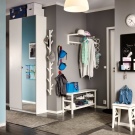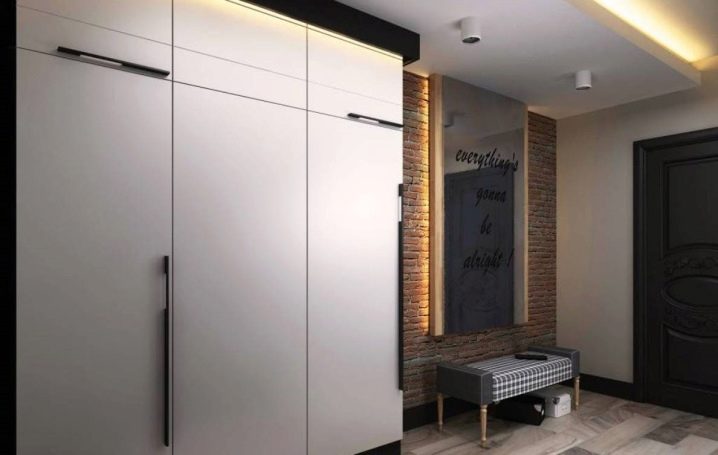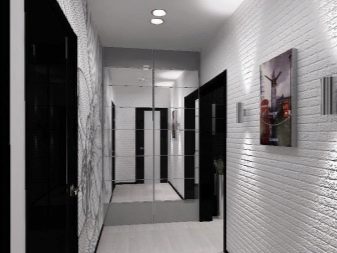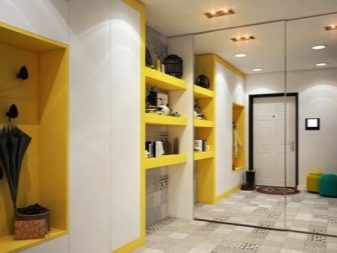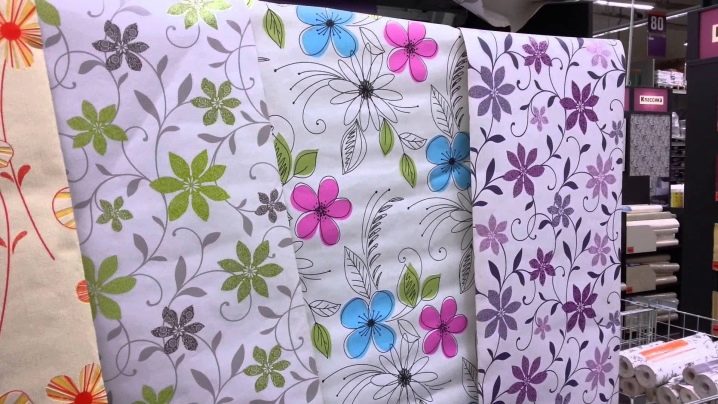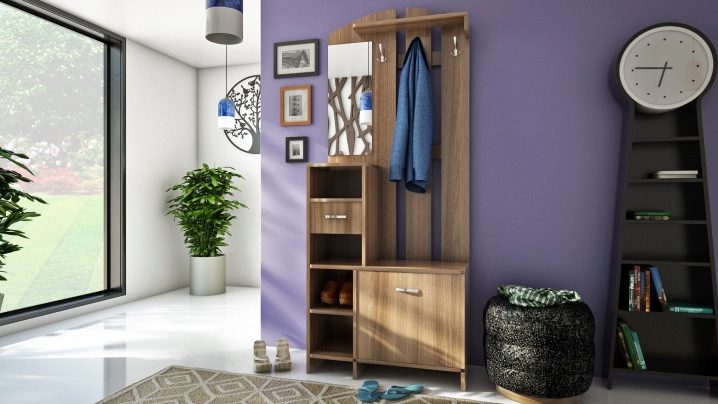What wallpaper to choose in the hallway?
Often, equipping your house, in the design of the hallway and corridor are engaged in the last turn (residual). However, this is a wrong decision. With the help of competent design of the corridor, you can divert attention from the small size of the hallway or building flaws. The most familiar type of decor is wallpaper. Which canvases are better to choose for different types of corridors, how best to combine them - this is our article.
Types
A distinctive feature of the design of the corridor is the increased wear resistance of the finishing material, because this space, as a rule, is a narrow entrance place, which means it is constantly being polluted. To keep the room clean, you need to choose such wallpaper, for which it is easy to care.Fortunately, in addition to the usual paper versions, modern technologies offer many new types of wallpaper.
Vinyl
The most popular today - vinyl wallpaper (polyvinyl chloride). The basis of this material is paper or non-woven. The vinyl film is applied on the base in various ways. Depending on this method, vinyl wallpapers are:
- Dense or smooth. High-density flat or slightly embossed film is often similar to ceramic tiles or stone.
These canvases can even be brushed. You need to glue on the surface without large flaws.
- Foamed. Due to the porous structure of the wall surface, these canvases can breathe. Only this type of vinyl wallpaper is breathable.
For water is negative. You can clean the dirty place with a slightly damp cloth.
Foam film well masks the irregularities on the wall.
- Solid. Such wallpaper is a very high-quality imitation of natural finishing materials (stone, brick, textiles, textured plaster) using a dense and tough film. The choice of colors is huge.
Durability and wear resistance are ideal for the corridor.Manufacturers also offer options for painting.
- Hot Stamping Wallpaper (silk-screen printing) with silk threads and soft gloss is much thinner. Because of this, the quality of the walls should be better, otherwise all the irregularities will be noticeable.
The term of operation of vinyl wall-paper is about 7-10 years. They are resistant to fading. When glue is applied, the fabrics are stretched, and when dried, they contract and form gaps between the strips.
To improve the alignment of the bands (which is a problem for some species), a special tape is used.
Washable
This wallpaper is covered with a special water-repellent film. This type of criterion is water resistance. Information about this must-see before buying on the insert to the roll. Some pieces can be wiped with a damp sponge, while others will take out the hard bristles of the brush, because they can be highly resistant to abrasion.
Such wallpapers are used in narrow corridors or houses where there are small children and animals.
Paper
This wallpaper has a short lifespan. Sticking technology is such that they can easily break. However, it is a breathable material. In addition, the manufacturer is now offering two-layer more dense canvases - duplex. Boring Soviet wallpapers are a thing of the past. In their stead came a colorful and textured variety.If, however, the simplicity of paper wallpaper confuses you, then you can use the additional decor, which will be discussed later.
Glass fiber
Oddly enough, glass wall paper is an eco-friendly version of finishing materials. After applying this relief coating, irregularities and flaws on the wall will be invisible. They are able to withstand mechanical damage (animal claws, abrasions, impacts). But such material requires painting after application to the wall. Moreover, you can change the color of glass walling many times, even applying drawings and stencils.
This type of material passes air and vapor well and does not emit toxic substances. In the corridor, this is a great choice for those who are good at painted walls. Latex paint is commonly used for decoration.
Liquid
This type of wallpaper is an ideal way for walls of complex configuration. Arched openings, custom designs to finish this type of coating is not difficult, in contrast to the canvas rolls.
Under it will not be visible any seams and flaws of the wall.
This mixture (cellulose, cotton, man-made fibers, adhesive composition and coloring pigment) is sold ready-made (in buckets) or dry (in bags).It is applied to the wall with a spatula with a layer thickness of about 5 mm. In this application technique can be very different, like a spatula. Such a surface should be textured, and not smooth.
Before buying, you should carefully read the instructions, as the liquid wallpaper on the composition and purpose are very different from each other.
This type of wallpaper resembles textured plaster. After application, you can additionally coat the surface with varnish. Then such a wall will succumb to washing. If no varnish has been used, the surface is vacuumed if necessary. If desired, it can be repainted in a different color.
Flizelinovye
Flizelin - non-woven material, based on textile and cellulose fibers, connected by a polymer resembling fiberglass. The positive quality of non-woven wallpaper is to maintain the size when applying glue. Flizelin is stronger than a paper cloth that increased the service life of wallpaper.
This type of wall material looks volumetric due to the sunlight falling on the fibers and illuminating it from the inside. In a multi-layer non-woven fabric, the upper layer is corrugated, as a result of which beautiful visual effects appear.
When gluing on the wall, the piece does not need to be greased with glue, which greatly facilitates the work and allows you to carefully adjust the edges.
This material perfectly hides the defects of the wall and is glued to almost any surface. But it must be borne in mind that the roll is translucent, so the color of the glued plane is important.
Laminated
Wallpapers are laminated. This is a technique of applying yarns that are natural (cotton, linen) or mixed (viscose) fibers. Such elements or even fabric cloth laminate the paper. The result is a textile wallpaper. They are dense, they do not need to be customized according to the pattern, and the joints are easily masked.
Natural
Naturally conventionally called wallpaper, in the manufacture of which use natural materials: bamboo, jute, cork chips. They are glued to a non-woven or woven base. Make and care for such beauty is difficult. However, the walls with them look great.
Only natural wallpapers are not suitable for all corridors. If bamboo has a lot of light and dark shades, then a crumb of brown tone, and this color is not suitable for dark rooms.
Quartz
This is one of the modern species, which is a paper or non-woven canvas, on which painted quartz sand is applied. Such a product is not susceptible not only to abrasion, but also to fire. The wall with quartz wallpaper looks smooth, without joints. It can optionally be repainted with latex paint. It is also permissible to apply any drawings.
Metallized
This is a porous paper or fabric base, on which a thin layer of foil is applied, then a special paint, and a stamping or drawing on top. These wallpapers look incredibly beautiful and elegant. The feeling of luxury is present in the interior with a similar finish.
The metallized options are durable and easy to clean. But the wall under them should be perfectly flat and moisture-absorbing, since the glue will evaporate through it.
Linkrust (linkrust)
This is a very unusual modern material - stucco, which is a layer of the mixture, which consists of wood flour, linseed oil, rosin, wax, chalk and other fillers. The naturalness of the components allows you to use linkrust in any premises, especially since the stucco can be on any topic.
This material has a large color range, but the most popular are pastel shades. This is exactly what is needed for dark corridors.
The technology of working with this canvas is unusual: the twisted rolls are dipped in hot water for 5-10 minutes, after which they are allowed to soften for 8-9 hours. So, the fabric is secondary shrinkage, and there will be no divergence of the seams after drying. Such material will last forever, which affected its price.
Color palette
The right choice of colors will advantageously show an ordinary room and add comfort. Most often in the corridor there is no natural light, so it is better to choose such colors for the wallpaper, so that they are in harmony with the selected lighting and furniture.
Contrasting
The classic version of the contrasting combination is black and white. For the corridor, white and light colors are a good choice, as the room will appear larger. But it will get dirty faster. However, black blotches will hide the dirt particles on the wallpaper. For the same reasons, you can use monochrome canvases, but two contrasting colors. For example, the yellow top and brown bottom when dividing the corridor horizontally in half.Or a dark blue border and turquoise main canvas.
Bright tones
The interior, which has distinct lines (doors, baseboards, niches), will ideally complement the bright colors and shades. You can try on red and burgundy color in a large space with wall sconces.
In such an entourage can live brutal male or female vamp. A young family with a small child will be welcomed in the hallway with a corridor in a bright green and orange-green range.
Pastel shades
If there are no small children and animals in the house, then light shades will decorate, refresh and ennoble a small corridor. A little lilac in combination with pale blue, ayvor with light green - the correct selection, and the house will sparkle with new colors.
Ornaments and patterns
Ornaments and patterns - this is the second after the color, what they pay attention to when looking at the wallpaper. With their help, you can hide the disadvantages of pasting cloths. But not all patterns are suitable for a small corridor. In the apartment with a narrow and long hallway, it is not recommended to glue the walls with wallpaper with large-figured ornaments. They will psychologically crush and hide space.
Wallpapers with small patterns or monograms will visually increase the corridor.This option is suitable for a room in the style of a classic that loves space. Vertically striped wallpaper will make the space narrower, and the horizontal stripes will turn it into an infinitely long version.
But those who are lucky with a large corridor, can use in the decoration of frescoes and drawings in the whole wall. Monochromatic wallpapers with medium-sized simple colors around a doorway or arch in Provence style look no worse. In this case, the main color of the canvases can be sandy, dull yellow, and the border strip can be olive or pale green.
Experts recommend not to get involved in borders.
Vintage designs are concise or vivid. These canvases completely cover the walls or are combined with solid companions.
The use of an abstract pattern is possible in different ways: in large corridors - on the whole wall, in small ones - in the form of an ornament along the perimeter.
Wall mural
This type of wall covering appeared in the Soviet Union in the eighties and was very popular. So much so that there were too many pictures with waterfalls and woods, and compatriots quickly abandoned their use.And now photo wallpapers are gaining popularity again. For 30 years of his fame, of course, new items have appeared. For example, wallpaper with a 3D effect is a beautiful design solution for decorating any room.
But for small areas such as a hallway in the “Khrushchev” one needs to pick up such a photo so that it enlarges and illuminates the corridor. To enhance the effect, it can be highlighted along the contour with LEDs or spotlights.
Choosing wallpapers for the corridor, you should remember the rules:
- a large ornament or a 3D effect will visually reduce the parameters of the room;
- for a better psychological perception, bright colors should be combined with pastels;
- dark tones are not used in large quantities in small corridors;
- small drawings and colors need a lot of light;
- when placing mirrors in front of the photo wallpaper, not only the space, but also the number of images will increase.
How to glue
Not any wallpaper suitable for certain walls. The choice depends not only on the quality of the surface, but also on the humidity of the room. Any type of cloth suitable for dry spaces with smooth walls. In houses and apartments with high humidity, it is better to use washable wallpaper, and on uneven walls - embossed or densely patterned options.Walls with defects can be hidden under glass or liquid paintings.
Proper selection of glue will allow for a long time without repair:
- Paper wallpaper can be glued with glue for this type of cloth or universal composition.
- Washable vinyl, heavy, embossed - special glue for vinyl wallpaper.
- Vinyl curbs need special glue for curbs.
- Paper borders can be glued with universal glue.
- For wallpaper on non-woven base there is a specialized glue.
- Self-adhesive borders are glued without the use of sticky compounds.
Repair work starts from the ceiling. Then prepare the wall.
- On new or porous walls, before applying for 24 hours, a primer should be applied. This will save the surface for the subsequent change of wallpaper.
- Painted walls need to be washed and sanded for better adhesion of glue and wallpaper.
- From the walls with old wallpaper they need to be removed with a water spatula or steam cleaner.
- For the treatment of walls in wet areas should use a special primer, not forgetting the drying period.
Wallpapering is done after preparing the walls,thoroughly cleaning the floor and preparing tools for work: a bucket or tray for glue, scissors, a stationery knife, a rubber spatula, a pressure roller for fixing wallpaper on the walls, a lot of white dry wipes for removing excess glue, a bucket with water and a rag for the floor, table or step ladders.
The answer to the question: “where to start? "Depends on the presence or absence of a window in the corridor and the edge of the wallpaper. In the case of a window, always start from it so that the joints from the light falling on the wallpaper are not visible.
At the same time, after gluing the first strip, you need to fit the picture on the second strip along the wall.
In the case of a monophonic canvas, without fitting, you need to glue the first strip, check how much it changes size during gluing, and then cut several strips of the right size at once.
Wall-paper on which it is necessary to apply glue, have various time of impregnation. Given this, you can speed up the work (one strip is glued, the second is soaked at this time). Paper wallpaper is soaked for 5 minutes, duplex paper - 7-8 minutes, and the densest - 9-10 minutes
For the impregnation of vinyl strips it will take 8-10 minutes. On the liner in the roll is always indicated the time of impregnation.
To learn how to glue wallpapers, see the next video.
Decoration options
With the help of modern materials you can use the most fashionable ideas in decorating the corridor. The main thing is to find a balance between wallpaper, ceiling, floor, baseboard and door leafs.
Based on this, choose the decor:
- A very frequent option is the finishing of MDF, PVC or wood panels. A reasonable combination of panels and wallpaper will make the corridor cozy and clean.
For example, the lower half of the walls can be covered with panels, and the upper one can be covered with wallpaper.
- The walls of the large corridor are often decorated with photographs and photographic portraits. This means that such surfaces should be decorated with light wallpaper, allowing to focus on photos.
A stylish option is decorating with artificial stone in combination with wallpaper.
It is important to choose the right pattern for such canvases to match the decor.
If a staircase leads from the corridor, then the under-stairs space can be equipped with functional storage systems - racks, shelves or drawers.
Used wood colors will look gorgeous with natural bamboo or cork wallpaper, or canvases under the tree.
- Popular fashion trends - wallpaper companions. Manufacturers took care of such a product, and customers have plenty to choose from.
- There are completely non-standard decor options: glass, a large number of mirrors, metal, wicker furniture and be sure to light. Correct accents will make the corridor beautiful.
Important recommendations
When making a corridor you need to follow the following recommendations:
- take into account the size and shape of the layout;
- do not forget about the age of tenants;
- recall the animals that live in the house;
- take into account the styles that decorated the adjacent premises;
- do not use large quantities of dark colors in a small corridor;
- do not overload the room with furniture and coarse wallpaper;
- a double corridor can be decorated with the same wallpaper, or different, but in harmony with each other;
- for a private summer house or country houses there is no need to use expensive wall covering: wooden walls are fine paper breathable wallpaper.
To calculate the required number of rolls, you need to know the width of the pieces, as well as the actual dimensions of the corridor: the perimeter of the walls and the height of the ceilings.
The purchase will be influenced by the number of doors and windows, as well as the presence or absence of a pattern by which the webs should be customized.
With a ceiling height of 2.7 m and a corridor perimeter of 12 m, we calculate the required number of rolls 53 cm wide and 10 m long. From each piece of wallpaper you get 3 full-fledged stripes, even taking into account the fit. Each running meter is 2 lanes. Our corridor is 12 mx 2 lanes = 24 lanes. This means that you will need to buy 7 rolls (24 lanes: 3 lanes in a roll).
Experts advise buying an additional roll in case of marriage.
Properly selected wallpapers in combination with decorative design and beautiful furniture will make even a small corridor cozy and comfortable, and a large one - harmonious and luxurious.
